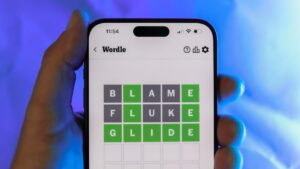
Researchers at RMIT University have unveiled a groundbreaking 3D-printed diamond-titanium device capable of generating electricity from liquid flow and receiving wireless power through tissue. This innovation could revolutionize the field of medical implants, potentially enabling the creation of battery-free devices such as smart stents and prosthetics that are customized to individual patients.
The device, which combines semiconductive diamonds with titanium, represents a significant advancement in biocompatible materials. Laboratory tests using saline solutions have demonstrated its ability to produce small but consistent electrical signals from liquid flow. However, the technology requires further development and testing before it can be applied in real-world scenarios. Researchers are currently seeking partners across various biomedical sectors to advance this promising technology.
Smarter, Safer Implants
Dr. Arman Ahnood, Senior Lead Researcher from RMIT’s School of Engineering, emphasized the potential of this innovation to overcome one of the major limitations in implant technology: the reliance on batteries. “Our goal was to overcome one of the biggest limits in implant technology – the battery,” he stated. “They take up space and eventually fail, which often means another operation. With this approach, implants could run continuously with little or no onboard battery.”
Additionally, the ability to receive wireless power and harvest energy from liquid flow could have applications beyond the biomedical field. “The ability to wirelessly receive power and harvest energy from liquid flow could be valuable in many other industries where sensors are needed in hard-to-access places using some of the most inert material systems,” Dr. Ahnood added.
Power from Liquid Flow
The device’s capability to generate electricity from liquid flow was tested using saline solutions in a laboratory setting. Dr. Peter Sherrell from RMIT’s School of Science explained the significance of this effect for low-energy medical devices. “When liquid flowed across the surface in our lab tests, it produced a small but steady electrical signal. This is completely new – most implant materials are either insulating or conducting – this the combination of both in a single material that lets us see and use this electricity,” he said.
While the energy generated on its own may not be sufficient to power most devices, it could be combined with wireless charging to support simple implants. This dual capability makes the device particularly promising for future medical applications.
Printing Stronger, Tailored Devices
The innovation also showcases the potential for creating complex, patient-specific implants. Professor Kate Fox from RMIT’s School of Engineering highlighted the advantages of using diamond with titanium. “Diamond with titanium gave us a structure that was not only lightweight and durable but also electrically active,” she noted. “It shows we can design implants that do their mechanical job and also provide sensing or power functions.”
This capability to print tailored devices could lead to more effective and personalized medical treatments, enhancing patient outcomes and reducing the need for invasive procedures.
Next Steps
The research team acknowledges that further testing is necessary to refine the technology and bring it to market. They are actively seeking collaborations with partners in both the biomedical and other sectors to help transition the innovation from the laboratory to practical applications.
The research findings have been published in the peer-reviewed journal Advanced Functional Materials, under the title ‘Additively manufactured diamond for energy scavenging and wireless power transfer in implantable devices’ (DOI: 10.1002/adfm.202508766).
This development represents a significant step forward in the field of medical implants, offering the potential for safer, more efficient, and longer-lasting solutions. As the technology progresses, it could pave the way for a new era of medical devices that are both smart and sustainable.





